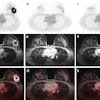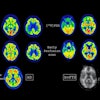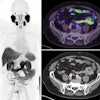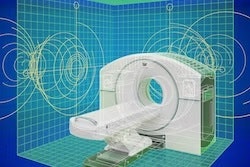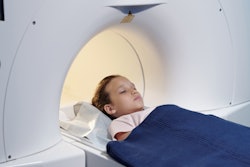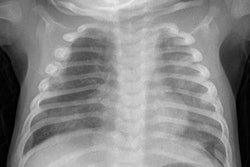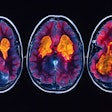Over the past 20 years, children have benefited from a massive reduction in PET imaging radiotracer doses without any compromise in image quality, according to a study published on 19 October in European Radiology.
A group at the University of Zurich in Switzerland studied the evolution of administered F-18 FDG radiotracer used in PET/CT or PET/MR in pediatric patients up to 16 years old. Injected amounts of the tracer have dropped by 66% between 2000 and 2021, they found.
"Technical innovations in pediatric hybrid F-18 FDG-PET has led to a steady decrease in the amount of applied radiotracer, which is particularly beneficial for children who are more sensitive to radiation," wrote first author Stephan Waelti, MD, and colleagues.
Epidemiological studies have linked childhood radiation exposure -- including that associated with medical imaging -- to the occurrence of certain cancers, such as central nervous system tumors or leukemia, the authors explained.
In PET imaging, radiation exposure originates from injected F-18 FDG radiotracer and in the case of hybrid PET/CT imaging, also from the CT scanner. In PET/MRI, all of the radiation exposure derives from injected F-18 FDG.
However, different technological developments in PET, such as detector and reconstruction algorithms, as well as dose administration protocols, are believed to have reduced the amount of administered radiotracer activity, they added.
To quantify these developments, the group analyzed administered doses in 243 children and adolescents who underwent 466 clinical F-18 FDG-PET/CT or PET/MRI scans of the body at their hospital between January 2000 and May 2021. They measured exposure in megabecquerels (MBq), with standard recommended doses ranging between 2 and 5 MBq per kilogram.
The median injected F-18 FDG activity dropped from 296 MBq in 2000-2005 to 100 MBq in 2016-2021, equaling approximately one-third of the initial amount, the group found. Over time, the reduction ranged from −57% up to −84%, depending on the age group, with the smallest reduction observed in the youngest patients.
In addition, signal-to-noise ratio (SNR), an objective surrogate for image quality, remained stable during all years, they added.
"Radiotracer dose was reduced considerably over the past two decades of pediatric F-18 FDG-PET/CT and PET/MR imaging, highlighting the success of technical innovations in pediatric PET imaging," the group wrote.
Ultimately, the researchers suggested that this trend of decreasing radiotracer doses is expected to continue in the next few years, with technologies such as AI-powered image reconstruction entering the clinical market.
Moving forward, the emergence of whole-body PET/CT systems, which allow for shorter acquisition times (less than a minute), reduced administered activity (as low as one-twentieth of the standard dose), and enhanced image quality, will also have an impact, they added.
"In light of the increased sensitivity of children towards ionizing radiation, our findings are of special clinical significance and should promote further scientific efforts towards enabling further dose reductions," the group concluded.
The full study is available here.

